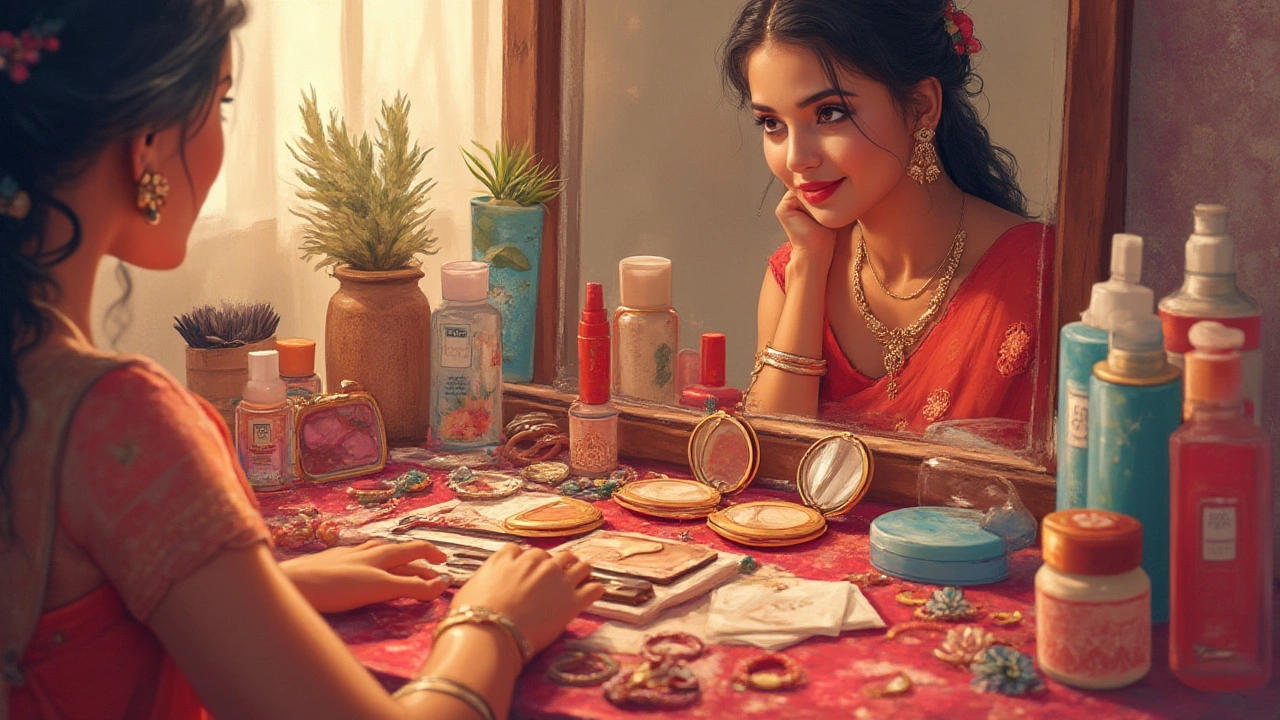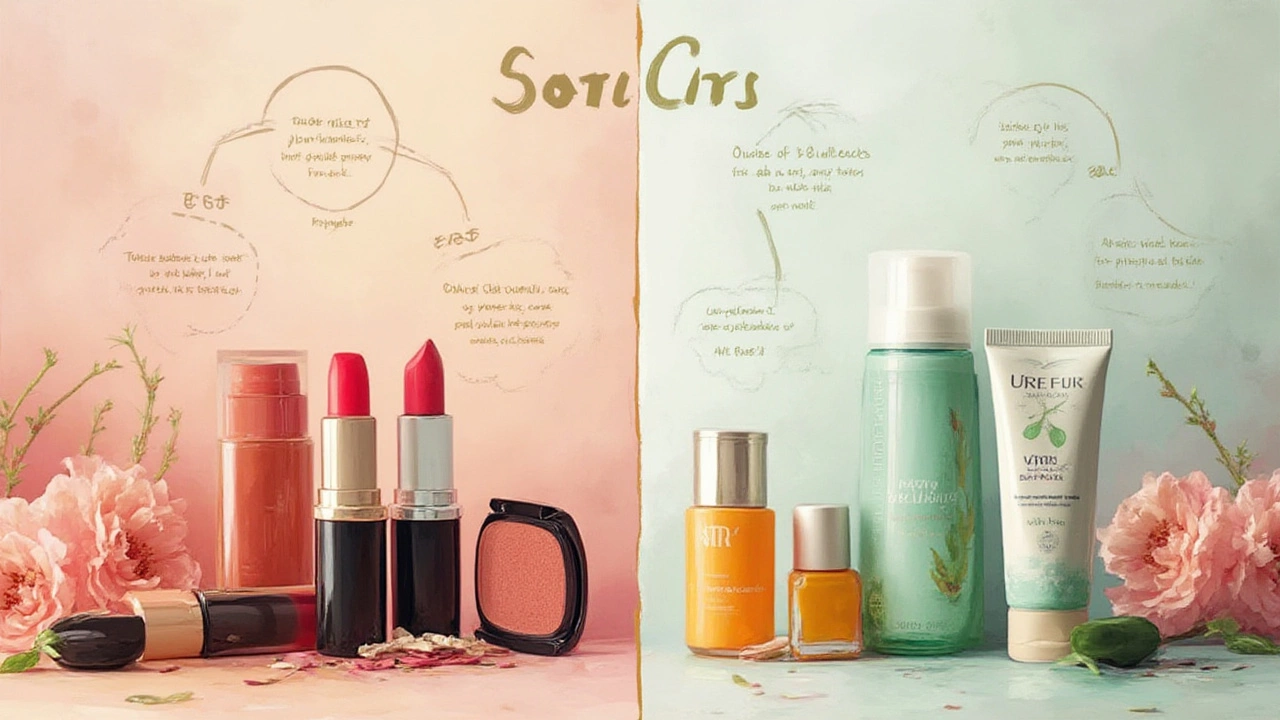
Ask five people what a "cosmetic item" is and you’ll get five different answers. You might expect an easy checklist—but the line between moisturizer, makeup, and medicine gets blurry fast. Walk into any pharmacy or scroll through an online beauty shop, and you’re hit with marketing terms: beauty, cosmetic, personal care. But what do these labels actually mean when it comes to the products we use every single day? The answer hides in ingredient lists, legal definitions, and even a bit of history.
The Real Definition: What Makes Something a Cosmetic Item?
At its core, a cosmetic item is any product that’s designed to beautify, cleanse, perfume, change appearance, protect, or maintain the skin, hair, nails, lips, or teeth—without affecting the body’s structure or functions. Think of a lipstick, blush, or even a face cream. If you put it on to look better or feel fresher, not to treat or cure a disease, odds are you’re dealing with a cosmetic. What really trips people up is the fuzzy border between beauty and health. For example, sunscreen used to be classified as a “cosmetic” in the EU, but not in the US, where it’s considered an over-the-counter drug because it actively protects against sunburn. Same goes for anti-dandruff shampoos: they straddle both worlds.
The US Food and Drug Administration (FDA) spells it out: cosmetics are “articles intended to be rubbed, poured, sprinkled, or sprayed on... for cleansing, beautifying, promoting attractiveness, or altering the appearance.” Importantly, if something is meant to cure, treat, or prevent disease, it’s not a cosmetic. A medicated acne cream? Not a cosmetic by FDA standards. But a tinted moisturizer loaded with shimmer, as long as it doesn’t claim to heal, counts as one.
Here’s a quick cheat sheet to figure it out visually:
| Product Type | Cosmetic Status | Why |
|---|---|---|
| Lipstick | Yes | Changes appearance, no health claim |
| Deodorant | Sometimes | If it just reduces odor |
| Antiperspirant | No | Alters body function (blocks sweat glands) |
| Moisturizer | Yes | Maintains appearance, adds moisture |
| Sunscreen | Depends | EU: Cosmetic / US: Drug (protects from UV) |
| Whitening toothpaste | Depends | If it claims to whiten beyond cleaning, may cross into "drug" |
| Perfume | Yes | Used for scent only |
In 2024, the global cosmetics market was worth over $380 billion. The most popular cosmetic categories are skincare, haircare, makeup, fragrances, and deodorants—with about 31% of total market sales going to facial skincare alone. The biggest brands (L’Oréal, Estée Lauder, Shiseido) focus their innovation here, launching hundreds of new cosmetic items each year that all fit the legal mold.

Types of Cosmetic Items: Not Just Lipstick and Blush
Cosmetic items go way beyond the makeup aisle. Sure, foundations, mascaras, bronzers, and lip glosses make the cut. But did you know that everyday products like shampoos, shaving foams, and even hand creams are considered cosmetics? It’s all about the product’s primary use. A shower gel you got for its cherry scent? Cosmetics. That serum with peptides promising a temporary “glow up” for date night? Also cosmetics, as long as it doesn’t promise medical-level transformations.
Let’s look at how broadly this stretches. Here are examples that fly under the “cosmetic” radar for many:
- Cosmetic item, by expert consensus, covers items such as:
- Facial cleansers (as long as they don’t claim to fight bacteria)
- Nail polishes and nail polish removers
- Toners and tonics
- Beard oils and moustache waxes
- Mouthwash (when marketed only for fresh breath, not anti-cavity)
- Temporary tattoos and body paints
- Tinted lotions, bronzers, and self-tanners
- False eyelashes and adhesives (as long as no therapeutic claim)
A lot of men’s grooming products are cosmetics too, but they’re rarely marketed with the word “cosmetic.” Beard balm is one example. Cosmetic manufacturers also have to follow strict rules for labeling, safety testing, and ingredient disclosure. If you read the back of a European or Australian beauty product, you’ll see a full list of INCI (International Nomenclature of Cosmetic Ingredients) names, which is basically a cosmetic “language” used worldwide for clarity. Ever heard of animal testing bans? Many countries specify that only “cosmetic items” are impacted, so understanding what counts really matters for shoppers who care about cruelty-free beauty.
Brands use slogans like “dermatologist tested,” “all-natural,” or “vegan” because people love them, but none of those terms are required by law to make a product a cosmetic. And while organic skincare sounds good for your health, it’s a marketing term, not a legal category—unless you’re in a region with specific organic beauty rules (like the EU’s COSMOS standard).
Keep in mind packaging too. Minis for travel, refills, and eco-conscious tubes are all the rage. Refillable lipsticks, powder compacts, and stick deodorants broaden what counts as “cosmetic packaging.” Shoppers are demanding more sustainable materials. In 2023, over 40% of beauty buyers in Europe said they’d pay more for environmental packaging—a trend changing not just cosmetics, but the whole personal care industry.

Tips for Spotting and Using Cosmetic Items Safely
Getting savvy about cosmetics helps you make safer, smarter choices. First, always check the location on the shelf or the words used online. If a product says “treats” or “prevents” a condition, it may be regulated as a drug, and that changes everything—from ingredient standards to possible side effects.
When you buy a new product, peel back the label and read those long ingredient terms. If you spot common irritants—parabens, phthalates, or high-alcohol content—do a spot test. Everyone’s skin is different; what caused no trouble for your best friend could wreck your skin barrier. According to a 2022 US consumer report, allergic reactions to cosmetics sent about 35,000 Americans to the ER every year, usually because of hidden fragrances or preservatives. Patch testing isn’t just for sensitive types; it can save you from a week of hives.
Have you heard about "comedic"? That’s a typo for "comedogenic," an actual risk with some skincare products. This means they’re more likely to clog pores and trigger breakouts, so folks with acne-prone skin should look for "non-comedogenic" on the label. Don’t mix too many active ingredients at once, or you’ll cocktail yourself into redness and irritation. Alpha hydroxy acids, retinoids, and vitamin C all work wonders—but stick to one or two at a time unless you’re a pro.
Expiration dates aren’t just for food, by the way. Most cream-based cosmetics have a little “open jar” icon with a number: 6M, 12M, etc. This means “good for 6 months/12 months after opening.” Toss out mascaras after three to four months—old eye makeup can harbor bacteria and cause infections. Sponges and brushes are the dirtiest culprits in any beauty routine. Wash them weekly in soapy water; let them air dry. Bonus tip: beauty pros say don’t store your cosmetics in a hot bathroom. Moisture and heat speed up bacteria growth and mess with their shelf life.
What if you’re shopping for someone with allergies, or just want the good stuff? Look for the “hypoallergenic,” “fragrance-free,” and “allergy tested” labels—but always take them with a grain of salt. In the US, these terms aren’t heavily regulated. You’re safer reading the actual ingredient list. Can’t pronounce it? There’s an app for that—literally. The Think Dirty and Yuka apps scan barcodes and flag ingredients that may not be skin-friendly.
For young teens just starting with cosmetics, the American Academy of Dermatology suggests gentle, simple products, and no sharing lip gloss or eye products. Bacteria can jump from brush to face, and nobody wants pink eye from a shared mascara.
With all of this in mind, try not to chase trends blindly. If you see a viral hack on TikTok—like using glue stick as brow gel or food coloring as lip tint—pause. Check a reputable beauty source before you end up staining your lips indigo. The best beauty routines just use cosmetic items that fit your skin, your style, and your comfort level.
Any time you’re in doubt about whether a product is a cosmetic, look for two signs: does it promise to alter your appearance (not your health), and is it meant only for external use? If so, odds are it fits the bill. And don’t stress about keeping up with categories. The beauty world changes fast, but the basics of what counts as a cosmetic item—and how to use it safely—stay surprisingly steady.
 Hair Care
Hair Care